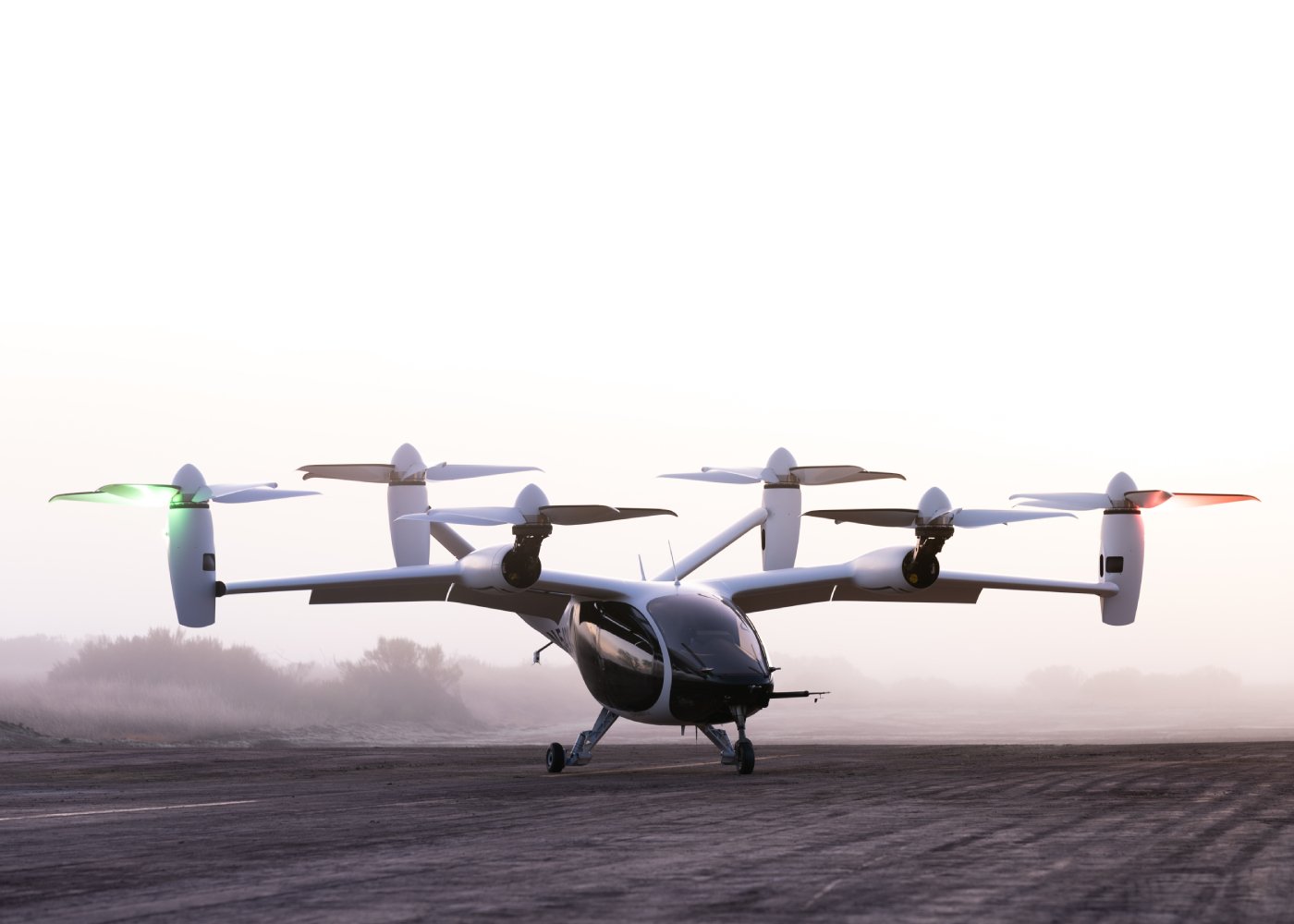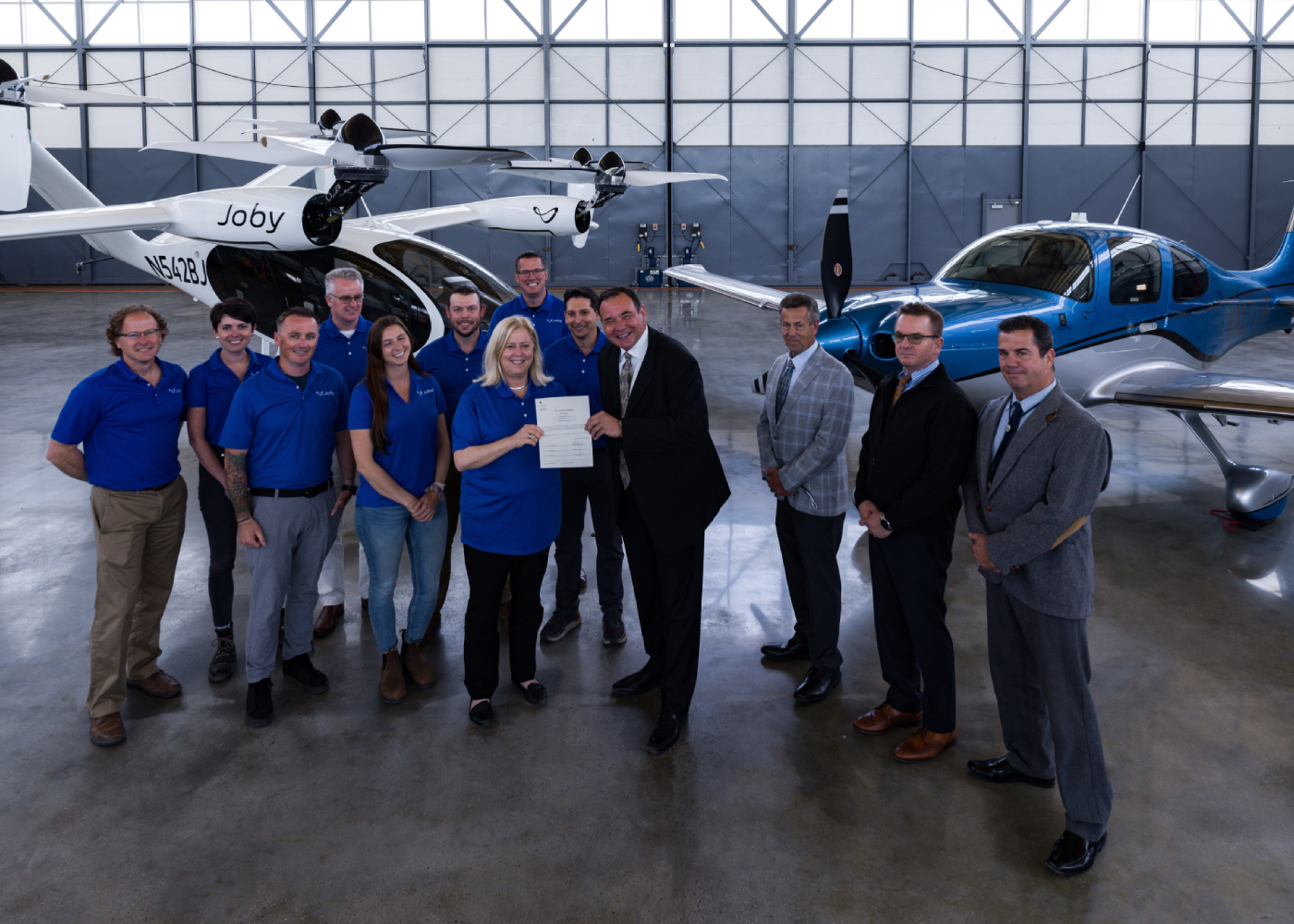Following Joby Aviation’s announcement that it has secured its Part 135 air carrier certificate from the U.S. Federal Aviation Administration (FAA), we had an exchange with Bonny Simi, Joby’s head of air operations and people, to get more details on this step.

While Joby has yet to release several details on its planned air taxi operations, such as the locations that will get the service, how the booking system will work, detailed fleet composition, and if the operations will be limited to visual flight rules (VFR), Simi shared some further information about its Part 135 certificate with eVTOL.com.
Alex Scerri: Good day, Bonny. Can you give us a brief background on how you landed at Joby Aviation?
Bonny Simi: I flew with United Airlines for 13 years, beginning as a Boeing 727 flight engineer and working my way up to Boeing 777 first officer, then captain of a 727 and then a 737-300. I moved to JetBlue when it was a startup, and was able to continue flying the A320 and E190 while moving into operational leadership roles and helping to build an amazing company culture.
That led me to the tremendous opportunity of launching JetBlue Technology Ventures, the airline’s venture capital arm, where I met and helped fund visionary founders like JoeBen [Bevirt, founder of Joby] who are building the future of aviation and travel.
After a few years supporting Joby’s incredible progress from my position as an investor, I came to believe not only in JoeBen’s vision and the company’s breakthrough technology, but in its incredible culture of embracing challenge and redefining what is possible. Working to reinforce that culture and lay the foundation for Joby’s airline operations has been incredibly rewarding for me, and I’m excited to continue building with this unique and dedicated team.
Alex Scerri: Joby Aviation has obtained its Part 135 air carrier certificate, which is a big step, and Joby achieved this ahead of schedule. Can you elaborate a bit on the volume of work required in the background to get to this point?
Bonny Simi: Receiving our Part 135 certificate from the FAA required the submission and approval of more than 850 pages of manuals covering training and operational procedures, followed by the demonstration of mastery of that material to the FAA by our initial cadre of pilots.
We elected to apply for a “clean sheet” Part 135, rather than acquire one from another company, which meant we had to develop all of this material from the ground up — but the result is an operational foundation that is optimized for our future large-scale air taxi operations.
We chose to pursue our Part 135 certificate well ahead of our aircraft’s type certification schedule in order to test and refine our operations and back-end technology using traditional fixed-wing aircraft, thereby de-risking the launch of our commercial eVTOL operations once the Joby aircraft is ready.

Alex Scerri: Can you confirm that you will be starting the operation with the Cirrus Aircraft SR22 fixed-wing aircraft?
Bonny Simi: We haven’t yet announced details regarding our planned operations, but the Cirrus SR22 is the only aircraft type currently listed on our operating certificate as of now.
Alex Scerri: What was the rationale for choosing a fixed-wing aircraft rather than a rotorcraft which would appear to be closer in operational flexibility and mission requirements to the aircraft that you are developing?
Bonny Simi: The purpose of receiving our Part 135 certificate at this point is to develop operational experience and validate our supporting software, and the Cirrus is a fantastic aircraft for those purposes. We can accomplish these goals with almost any aircraft, but outside of vertical take-off and landing, the Joby aircraft functions very similarly to a fixed-wing airplane.
Alex Scerri: Your partnership and eventual acquisition of Uber Elevate in 2020 must have given you access to extensive data and network simulations they had shown in the Uber Elevate Summits. Was this not enough that you felt the need to embark on the Part 135 project before certifying your eVTOL aircraft, to collect even more data?
Bonny Simi: Our acquisition of Uber Elevate provided us with a wide range of valuable knowledge and tools regarding demand simulation, market selection, and multimodal trip integration, and we continue to develop those tools in parallel with our certification work as we lay the foundation for the launch of our service in key markets.
But delivering a seamless customer experience also requires real-world experience — and that’s what achieving a Part 135 certificate allows us to do: apply these tools, software, and data to real operations to make sure we’re as prepared as we can possibly be once the Joby aircraft is type certified.
Uber Elevate also ran one of the first-ever integrated multimodal transportation services — Uber Copter — using helicopters to test and refine its processes ahead of the availability of eVTOL aircraft. We view this type of experience as foundational to a successful product launch.
Alex Scerri: The Cirrus SR22 is one of the most popular light aircraft in production, however, do you envisage that the aircraft you are developing will meet more stringent certification requirements than 14 CFR Part 23?
Bonny Simi: Our certification program is underway and we do not have anything to share at this time.
Alex Scerri: Besides the Cirrus Airframe Parachute System (CAPS), do you plan or have any other specific safety features planned for the Cirrus SR22?
Bonny Simi: Our Cirrus SR22 is equipped with standard features.

Alex Scerri: What are the entry requirements for your Part 135 pilots, and do you expect that they will transition to your eVTOL aircraft eventually?
Bonny Simi: The requirements for our Part 135 pilots are a commercial license, instrument rating and at least a second class medical.
Alex Scerri: Do you have anything to share about your specific training program for your pilots?
Bonny Simi: We are building a robust training program for our Joby aircraft, including the use of simulators in joint development with our CAE partners. We will share more details in the future.
Alex Scerri: Does Joby Aviation intend to permanently operate its eVTOL aircraft as part of the business, and does it intend to have distinct units?
Bonny Simi: We haven’t yet announced details regarding our planned operations, but as we’ve said repeatedly before, we do intend to operate our eVTOL aircraft. We are confident that the low noise profile, cost-effectiveness, zero operating emissions and vertical take-off capabilities of the Joby aircraft will result in a service that is convenient and valuable to our customers, and launching that service is our primary objective.
Alex Scerri: Reducing emissions is of course one of the main drivers for electrification in aviation. Will you have some program in place to offset the emissions from the Cirrus SR22 and any other conventionally powered aircraft?
Bonny Simi: We’ve announced numerous sustainability commitments and initiatives, and look forward to sharing more in the near future. Sustainability is incredibly important to us, and we’re committed to minimizing our carbon footprint across all areas of our business.









The power required for vertical flight is impacting all of the evtol world. The battery tech is just not there.
Lillian is also having problems.
This is shaping up to be a STOL game in the beginning.
Maybe lighter than air in connection with electric power
May be the answer.